If training consistently is the foundation of results, does that mean doing the same thing over and over? If you want to keep making progress, at some point you’ll need to make changes to your program, but what, when, and how much? Brett Jones takes the mystery out of adding variety to your training.
If you dive into the StrongFirst forum, you’ll see plenty of posts that reference ‘waviness.’ If you know your way around swings, get-ups, snatches, and so on, you probably know exactly what this means. But if you’re new to kettlebells, then this terminology might lead you to think you’ve mistakenly visited a surfing website. I can reassure you that you’re in the right place. Stick with me for a few minutes and we’ll explore what it means to make your training wavy, and why you’d want to.
In his seminal book Simple and Sinister, Pavel answers the question “How often should I do this program?” by succinctly stating: “Repeat until strong.” This might seem overly simple (and perhaps even a little sinister), but he’s right. You could do swings and get-ups five, six, or even seven days a week, get stronger and more powerful, and avoid injury and burnout. But not if you do the exact same intensity and volume every single day.

Introducing Intensity and Volume
Even terms like intensity and volume can seem perplexing if you’re new to training. Let’s define intensity as a percentage of either your one repetition maximum load (1RM), or your maximal number of repetitions, which we can use to define the weight of the kettlebell(s) you’re using. At its simplest, volume can be defined as how many total reps you do within a given session/time frame.
In order to progress in your lifts, you need to vary both intensity and volume from session to session, week to week, and training block to training block. This is what the Russians referred to as micro, macro, and mesocycles in their periodization model. In the Plan StrongTM programming system, we simultaneously wave multiple parameters. However, you can make a great deal of progress before such complexity is advisable.
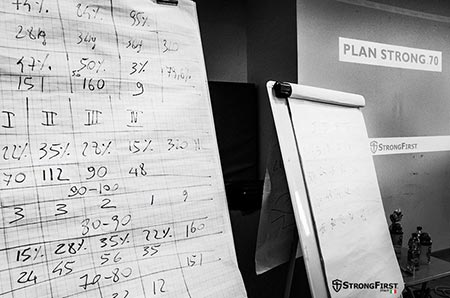
the complexity of Plan Strong
Variety Rules
For the sake of simplicity, let’s focus on the day-to-day variation for now. As a rule of thumb, the smallest amount of change you should aim for, in terms of both volume and intensity, is 20 to 25 percent. Pavel explains this ‘Delta 20’ principle further in his recent book, The Quick and the Dead.
The easiest way to introduce such waviness is to rotate between three different types of training days: heavy, medium, and light.
Let’s say that you did 100 swings with a 32kg kettlebell on your heavy day. A classic mistake would be to repeat the same session over and over again, and another would be only dropping the weight or reps a little bit (or, indeed, keeping one the same). Instead, you’d want to change both the weight and/or volume by at least 20 percent for your medium day, and then again for the light day.
Consistency Before Variety
A caveat, if I may, with another great Pavel quote: “If you don’t have heavy days then you don’t need light days.” Obviously, you can only define heavy for you the individual—please don’t do it by comparing yourself to others. If you are very early in your training and haven’t visited the neighborhood of a true 1RM or maximal reps, then your training will not need the full waviness we are discussing. Remember that in Simple and Sinister the training is very consistent with easier days taken as needed as you build toward the Simple standard. But once you are training for Sinister, there is the addition of waviness and reduced training days.
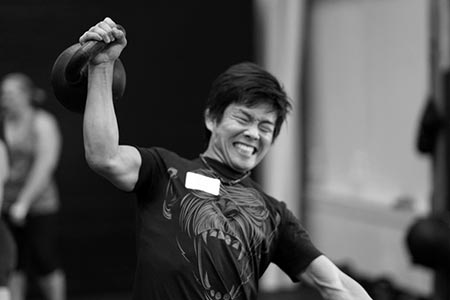
In full disclosure, I’ll admit I’ve made plenty of mistakes in not making my own training wavy enough over the years. For an example of introducing waviness properly, let’s look at my current pressing plan.
Right before I sat down to compose this article, I did five ladders with one, two, and three reps, with my 32kg kettlebell, for a total of 30 single-arm presses. In a couple of days’ time, I’ll do five singles with that same bell. That will be my light day. Then later in the week, I’ll do my medium day, which will be comprised of five ladders of single and double reps with the 32kg kettlebell, so 15 reps in total.
Why Be Wavy?
At StrongFirst, we don’t do gimmicks. Waviness isn’t some fancy concept we think we can market to sell more educational courses, or an example of using jargon for its own sake. Rather, it’s something that respects the biological and physiological reality of how the body responds (and with adequate rest, also adapts) to stress. Pavel often says, “Nature, in order to be commanded, must be obeyed.” Waviness is merely an expression of this notion.
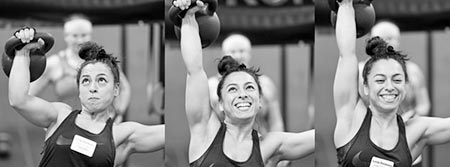
We should plan our training with rotating intensities and volumes because this is how we function as human beings, and it’s how the wider world around us works. Think about your job or family life. While there may be periods of calm, it’s rare for everything to run smoothly all the time. There are fluctuations, problems, and highs and lows. It’s the same in athletic competition. Life is wavy, so your kettlebell training—and, for that matter, bodyweight and barbell work—should be, too.
Another quote I’ve often heard and like a lot is, “Only the mediocre are at their best all the time.” If you think you’re consistently killing it, then you’re probably not pushing yourself hard enough or seeking out new challenges. It’s all too easy to slip into a ‘same old, same old’ routine, in which you do three sets of 10 reps of exercise A and the same for exercise B and then call it good. Repeat three times a week ad infinitum.
Doing something is better than being sedentary, but if long-term progress and learning is your goal, you’re going to need to switch things up.
Context is King
Another factor to take into account when starting to explore the concept of waviness and figuring out how to apply it, is being realistic about what your starting point is and what your intended destination is. Unless you like the idea of getting lost, of course. Like anything else in life, the right kettlebell training plan for you will largely be determined by context.
The legendary Marty Gallagher has a great story that illustrates this point perfectly. He was once at a powerlifting meet with his coach, Hugh Cassidy. In the warm-up room, Hugh proceeded to bang out 10 reps with 500 pounds. Marty was blown away, but his coach said, “Marty, it’s only 500 pounds.” For context, Hugh’s 1RM was 1000 pounds. Most people can’t get one rep at 500 pounds, but for this particular gentlemen, 10 reps at this weight truly was a viable warm-up for the quadruple-digit lift he was capable of at the time.
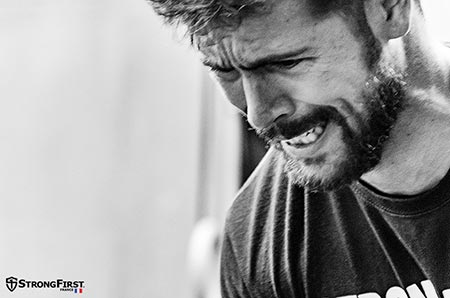
You’re most likely in a different stratosphere—don’t worry, me too—but this story serves our topic by showing the importance of knowing what you’re capable of right now on a heavy day, and then working backwards to adequately plan your medium and light days accordingly. You can look at setting a baseline from one of two perspectives: either a 1RM or how many reps you can do with a certain weight. This will be in the context of your end goal.
Specialized Variety and Consistency
Once you get started on a plan based on waviness between heavy, medium, and light days, recognize that there will be some individual variance in when you need to shake things up. One person might not see much progress unless they stay on the same plan for eight to twelve weeks, while another requires change after three to six weeks. With any kind of variation, you can either schedule it or it will be provided to you via injury, a lack of motivation, or both.
When you switch things up, a good place to start is by introducing specialized variety. The aim here is to develop complementary skills that result in improvement in a certain lift, such as one-arm swings. It’s variety with a purpose. It can also be driven by the hole you need to plug. So, if you’re having trouble going past a certain point in the sumo deadlift, you could try Zercher squats. Or if your grip is limiting your pullups, perhaps you add in some weighted carries.
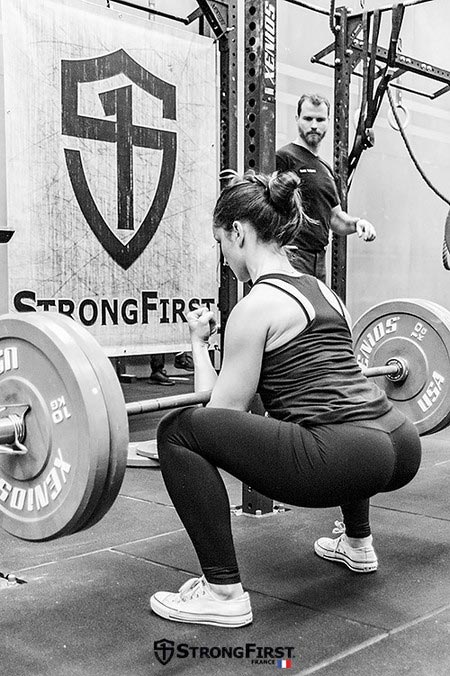
It’s also worth remembering that not everything is linear, so it’s unrealistic to see continual advancement at the same rate all the time. That said, you do need to be consistent and put in the work to meet or even exceed your goals. Just make sure you’re not going into autopilot and replicating the same session over and over again.
Trust that waviness will yield better results than sameness, because, in the end, you can do the same thing every day, as long as you don’t do the same thing every day.
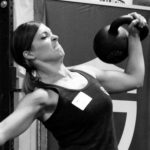
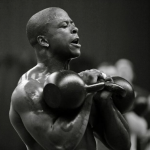
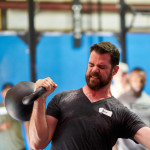
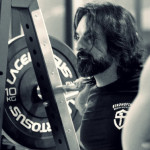




Great article. My MP goal is 1/2BW or 36kilo. I will need to figure this out w waviness PlanStrong concepts.
Brent,
A few options there:
Get a PlanStrong plan or work with a StrongFirst Certified Instructor that has taken Plan Strong.
Share your plan on the forum and get feedback on it.
If you look at Pavel’s original ROP plan the heavy, light, medium days are wavy.
Hi Brett,
Thanks for the article. I have always been curious about plan strong (since years ago when it was being developed – don’t think it is coming to Australia or I missed it) and like the concepts you talk about.
I ride the wave literally : My strength training has had to evolve a bit to accommodate ocean ski paddling (think sprint kayaking with waves) and that takes a bit out of me – grip, lower back for one – making DL hard. It is good because the paddling has a different training day every day (the ocean is never the same) – so I get the random variation without trying.
But for my strength work it is hard to have the heavy days. The light are easy of course, but I feel like its unnecessary because I don’t have the heavy days to balance them. So I sort of just keep things med-heavy. Which I can do and still slowly (very) get stronger or keep my strength, but I know it’s not ideal.
Do you have any suggestions how to mix up these two types of training – a more power/sprint kayaking session (I will go in most conditions under 40km wind) which I have no control over, combined with a strength session I can do whatever I like, except the super heavy (my DL in particular suffer due to the lower back, grip fatigue – my chins, dips ok, press sort of) . If I did go uber heavy, I would be fatigued paddling, and tip out (my ski is super narrow and unstable – unless it is moving, like a shark).
Thanks for your thoughts. Really appreciate that you give your time to write and comment.
Matt,
You have to follow what Pavel calls Tactical Periodization where the sessions are varied based on the demands “outside” the gym.
On a “heavy” ocean day you might match a light gym day for example.
I’m not sure if you can look at conditions for an upcoming week and “plan” how it would look and of course adapt to the changes.
Does that help?
I think this is what I need, Brett. I hit simple a year ago and have been able to hit the solid standard on TGUs for months, but I’m way outside 5 min on my swings @ 40kg. Grip strength is a limiting factor, and perhaps conditioning is too. I’m keen to push through solid to sinister, but have obviously plateaued.
How do I wave my S&S routine? 200 swings once a week at 32kg in tight timing? That’s pretty lactic, right? Focus on grip strength with heavy carries once a week (no swings that day)? Thanks.
Ben,
Hard to provide “full” feedback or recommendation without having more information but “broad strokes”
1) a few sets once or twice a week with the 44 or 48kg will help with the 40kg and the grip strength issue (3-5 sets of 3-5 reps for example)
2) carries are a good idea but rather than “carry to failure” treat them like good strength work with rest and staying away from failure
3) Don’t “push the clock”—if you have been going with set rest periods etc… try getting away from that for now and try using the talk test to manage rest time
4) As you push towards Sinister the training days go down to 3-4 a week to account for the increased intensity
5) Try impose the waviness between sessions
Keep us posted
Insightful post. It underscores why Q+D and the StrongFirst approach are so effective. Thanks for sharing the fruits of your experience, Brett.
Thank you
Excellent!
Thank you